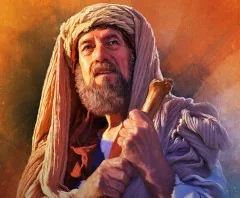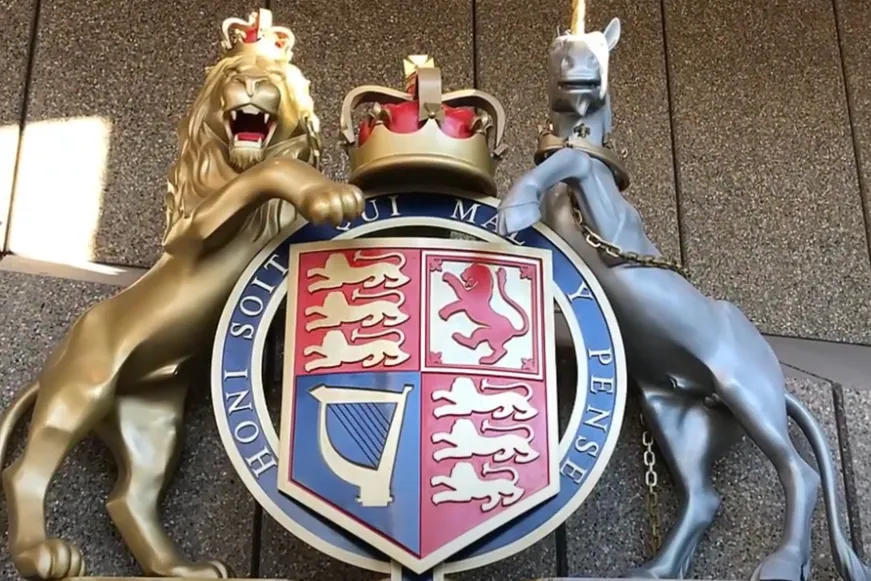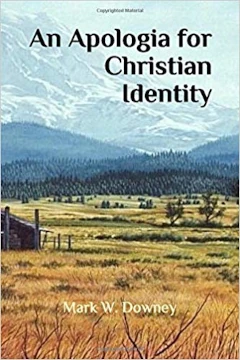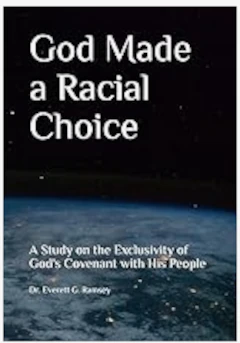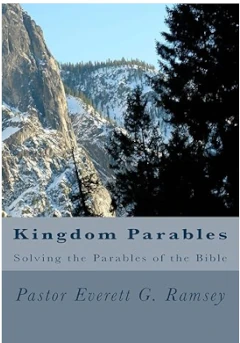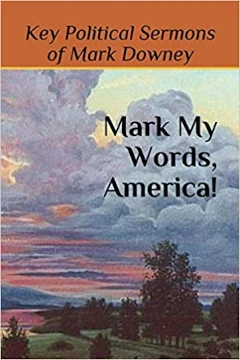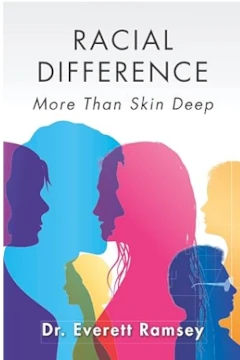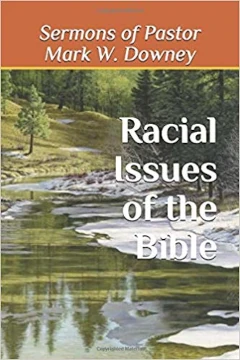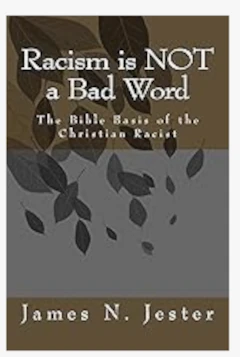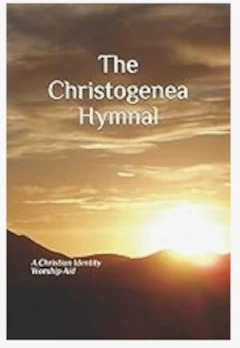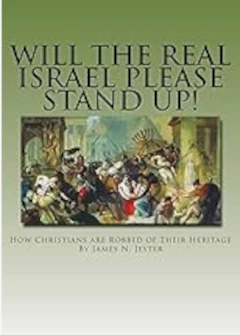The History of Hymns
By Debra Downey
We have such a deep rich history with 20 centuries of beautiful hymns that has been passed down to us, from generation to generation. Hymnody is the study of our hymns and should be periodically touched on in conferences. One of my research books had this in the preface: “In each era, creative people have offered their gifts to the Lord, shared by congregations and passed on. So as we worship, we are entering an ongoing song, composed long before our time and continuing into eternity.” Randy Peterson "Be Still My Soul"
A major research project of The Hymn Society, the Dictionary of North American Hymnology began in 1956 with the goal to index all hymnals published in North America; currently it indexes over 5000 hymnals published between 1640 and 1978 with over one million hymn mentions. In partnership with the Hymn Society of the United States and Canada, the dictionary is housed on https://hymnary.org.
Singing hymns together unifies us. They keep us focused on a common goal. Music goes deep in us and there is power in music. Through the singing of hymns, we are praising God, but also teaching, admonishing, inspiring, consoling, motivating, challenging, discipling and guiding.
- God’s people have sung hymns in honor of Almighty God since the time of Moses and before (Exodus 15:1).
- In Psalm 40, David sang the “new song” God had given him and he taught others to sing “a hymn of praise to our God”. (Psalm 40:3)
- In Mark 14, Jesus and His disciples sang a hymn together at the Last Supper (Mark 14:26)
- In 1 Corinthians 14, The early church sang hymns as part of their regular gatherings ( 1 Corinthians 14:26).
- And in Acts 16, Paul and Silas, with their feet in stocks in a Philippian jail, were “praying and singing hymns to God” (Acts 16:25).
In both Ephesians 5:19 and Colossians 3:16, Paul teaches us that gathered believers should sing psalms, hymns, and spiritual songs, “singing and making melody to the Lord with your heart” and "teaching and admonishing one another in all wisdom".
Most of us have been singing these hymns from childhood. And today, I would like to tell the story or refresh your memory on the stories of some of our most beloved hymns.
But first, let me start with a little music history on hymns and mention three of our most influential hymnodists: Isaac Watts, Charles Wesley and Fanny Crosby.
Technically, a hymn poem is a stanzaic, metrical poem meant to be sung. It has stanzas (or verses) with a certain number of syllables in each line, as defined by a hymn meter. I won’t go into the specifics of hymn meters except to say 2 things:
- A hymn meter makes it possible for congregations to learn a new set of words that matches a melody we already know. That provides a greater variety of meaningful poetic music into our worship service.
- Most hymnals include a metrical index of the book's tunes. Isaac Watts is credited with popularizing and formalizing these meters. Charles Wesley used 45 different meters which inspired many new hymn tunes in England.
Hymns are usually a collaboration of the poem writers and music composers, but some hymnodists wrote both the text and music. Martin Luther wrote the music for 36 chorales, to various texts, including some of his own, while the music for almost all of Charles Wesley's and Fanny Crosby’s hymns were done by various composers. "A Mighty Fortress is our God" is probably the most well known hymn that Martin Luther wrote both the poem and the music.
Music and words are both important in hymnody. It’s not just the words that give us a common vocabulary. The music itself lifts us and calms us, drives us and stretches us. We think about God’s grace when we hear the melody to Amazing Grace. When we listen to Beethoven’s Symphony 9, we can’t help but think of the words “Joyful, Joyful, we Adore Thee”. There’s a language beyond words, but the music must be right for the text and I’ll give you an example. Even though the well known classical composer George Frederick Handel wrote a melody for Charles Wesley’s hymn, Rejoice the Lord is King, it was the uplifting tune of a much lesser known composer, John Darwell that became attached to this text, because the music perfectly fit the ups and downs of the text.
Style of Music
Until the 18th century, most hymnody in churches consisted of monotonic singing of the inspired Psalm (single melody line with no harmony). During the Protestant Reformation, some reformers, like Martin Luther, began to include hymns, while others like John Calvin held to a principle of exclusive psalmody.
Of course the style of church music evolved through the centuries, as did the instrumentation:
- From monophonic Plainsong in the medieval days
- to Gregorian chant
- to psalmody (singing of the psalms as written in the Bible)
- to 4 part hymns or chorales that paraphrased scripture verse
There were several religious revivals in Europe and America. It was during what is known as the Second Great Awakening in 19th century America when the gospel style of music came on the scene. This was during DL Moody’s ministry and the era of tent revivals and camp meetings.
There’s a Difference between Hymns and Gospel
The wording in hymns is focused on God and His attributes, while the wording of gospel songs speak more towards conversion, grace, heaven and victory in an evangelistic way. Both hymns and gospel paraphrase Scripture or feature stanzas directly from the Bible.
Hymns are more formal, structured and complex, coming from the older European tradition of the early church, whereas gospel songs are more rhythmic and personal with simple, repetitive melodies and basic harmonies. Gospel songs employ the use of folk music while the musical origins of hymns lie in the classical church music of composers like Bach, Handel, and Mendelssohn.
The most defining musical element is that the gospel song has a refrain that repeats after each stanza. The classic hymns have only verses and no refrains.
Now I would like to briefly touch on three of the most influential hymnodists, the years they lived and how many hymns they wrote: Isaac Watts, Charles Wesley and Fanny Crosby. Their work is extensive.
Influential Hymnodists
Without going too deep into the specifics of each of these hymnodists, I will touch a little on how our music and subsequent worship service evolved by the movement away from psalmody to hymns.
Isaac Watts:
Summary: b.1674 d.1748; "Father of English Hymnody" and also known as "Liberator of English Hymns". Wrote 750 hymns
It all started with Isaac Watts who complained to his father in what he observed to be the “lifeless, dirge-like metrical Psalm singing” and he complained to his father many times of seeing dull indifference and thoughtlessness on the faces of the whole assembly while singing a psalm. His father encouraged him to give them something better to sing to. His first hymn was written at 20 years of age.
Watts’ hymns introduced a new way of rendering the Psalms by adapting them into hymn verse from a Christian perspective. He explained his methods as follows: “Where the Psalmist describes religion by the fear of God, I have often joined faith and love to it. Where he speaks of pardon of sin through the mercies of God, I have added the merits of a Saviour. Where he talks of sacrificing goats and bullocks, I rather mention the sacrifice of Christ, the Lamb of God….”
His metered texts based on New Testament passages brought the Christian faith into the song worship of the church. He was the first to paraphrase scripture and psalms and examples include “Jesus Shall Reign” based on Psalm 72 and “Joy to the World” based on Psalm 98.
He was well known everywhere as a writer of hymns and psalms, however, even though his work heavily relied heavily on Scripture, he was profoundly criticized for daring to alter the phrases of the psalter. To this criticism, Watts said “If we can pray to God in sentences that we have made up ourselves, then surely we can sing to God in sentences that we have made up ourselves.”
Isaac Watts is credited with some 750 hymns and he provided a lyrical vocabulary for Baptist and independent churches in England, influencing Charles Wesley and churches in America and around the world.
Charles Wesley
Summary: b.1707 d.1788; Wrote between 6,500 and 10,000 hymns
Charles was the younger brother of Methodist founder John Wesley. Charles’ hymns were often written to accompany specific sermons of his brother or to convey a particular theological message. His feelings on every occasion of importance, whether private or public, found their way into his hymns. Like Isaac Watts, Wesley's hymns are notable as interpretations of Scripture and paraphrasing Psalms with the introduction of Jesus into the Psalms, and this was often the source of controversy, even within his family. He wrote anywhere between 6000 to 10,000 hymn texts, but never wrote the music to them. I read that the difference of number of hymn texts attributed to him has to do with different editions of hymn collections having been published over the years and not only was there a lot of duplication, but there is also a lack of consistency in whether or not to include a significant portion of his draft manuscript verses.
During his life, he never heard his fellow Methodists sing his hymns in Sunday worship. At the time, Methodists were still part of the Anglican Church, and the Church of England did not officially approve the singing of hymns until 1820 …. 32 years after Wesley’s death. Instead Wesley’s hymns were sung in informal Methodist gatherings during the week.
Fanny Crosby
Summary: b.1820 d.1915; Wrote approximately 9000 hymns under multiple pseudonyms
Fanny Crosby was born 30 years after the death of Charles Wesley, during the American revival period. Blind all of her life, she began writing poetry as a child. Songwriting began when she was 31, when she wrote lyrics for popular songs and musicals. She didn’t begin writing hymns until she was 44, when she connected with the composer and music publisher William Bradbury and then she became one of the most prolific hymnodists in the English language.
She had an incredible memory and could hear a melody and quickly write a poem for that melody, having the whole poem in her head before writing it down. It is said that one time she was given a commission for 40 hymns and she worked on them one by one, but didn’t write a single one down until she had all 40 completed.
Crosby is believed to have produced about 9,000 hymns, although the Encyclopedia Britannica notes that the exact number is obscured by the numerous pseudonyms she employed to preserve her modesty. It is said that she used anywhere from 100-200 different pseudonyms. I read one source who surmised that the hymnbook publishers had her write under a number of pseudonyms because they didn’t want a whole book filled with so much by a single writer. Despite all her pseudonyms, most of Fanny's published hymns have appeared under the name of Fanny J. Crosby or her married name Mrs. Yan Alstyne,
Background stories behind some well-known hymns:
Be Thou My Vision This is a hymn that was 1500 years in the making. The story behind “Be Thou My Vision” begins with Maewyn Succat (pronounced May-win Soo-cawt)
Maewyn Succat or Saint Patrick, as he came to be known. When he was just 16 years old, pirates kidnapped Patrick in England and sold him into slavery in Ireland. This caused him to enter adulthood knowing the Gaelic language and Irish customs. He also became a Christian during this time. Years later, he escaped his captors and returned home to his family in England. While most would've stayed home forever, Patrick chose to go back to Ireland and become a missionary.
On Easter Sunday in the year 433, the local Irish king issued a decree in observation of a pagan Druid festival that prohibited any Christian from lighting a flame or candle until the Druid festival had started. Refusing to honor anyone but Christ that Easter day, Patrick, stood against the king and he lit a bonfire at the top of the tallest hill in the area, called Slane Hill, to show God’s light shining through the darkness. 500 years later an unknown composer would write a melody to honor this brave act, calling it "Slane" which, of course, was named for the hill where all of this took place.
The poem Rop tú mo Baile, (pronounced Robe too moh Bay-lee) or Be Thou My Vision, is traditionally attributed to Dallán Forgaill, an early Christian Irish poet and saint who lived from around 560–640. However, scholars believe the poem was written later, possibly in the 8th, 10th, or 11th century. The oldest existing copy of the poem is from the 14th century and doesn't indicate an author. Because of this, and a lack of other historical evidence, the poem's origin is unclear and most hymnals attribute it to anonymous.
A university student by the name of Mary Byrne discovered a 14th century copy of the poem in the early 1900’s and she translated it for the first time into English. It went through a number of translations and in 1912 it was put to the tune of Slane by an irish woman named Eleanor Hull and it became an instant success.
My Country Tis of Thee (America) One afternoon, in 1831, Samuel Francis Smith, a student at Andover Theological Seminary in Andover, Mass, was sitting in his room on the campus. The school was near the church in which the lantern was hung during Paul Revere's famous ride. Samuel spoke several languages and a music publisher, Lowell Mason, had given him a number of European music books and asked him to translate some of the songs into English, for the purpose compiling them in a new hymnal.
Smith became focused on a German song entitled "God Bless Our Native Land." The tune had already been used in England for more than 100 years as "God Save the King."
Instead of translating the original lyrics, Samuel decided to compose a new message for the musical setting. Within an hour’s time, he finished what was to become one of the most famous of all American songs. He later declared that he had not intentionally tried to write a patriotic song, but it soon took on a life of its own. It served as our unofficial national anthem for 100 years until the adoption of "The Star-Spangled Banner" in 1931.
America the Beautiful by Katharine Lee Bates. Bates was a professor of English literature at Wellesley College in Massachusetts. She wrote poetry, children's stories, textbooks and travel books. In the summer if 1893 when she was lecturing at a summer course at Colorado College she went to the top of Pike's Peak with other faculty members. Katharine recalled, “ … We hired a prairie wagon. Near the top we had to leave it and go the rest of the way on mules. I was very tired. But when I saw the view, I felt great joy. All the wonder of America seemed displayed there, with the sea-like expanse,” She later described the view from atop the mountain: “in one ecstatic gaze, I saw below a bedspread of green pine; in the distance, peaks capped with white; and above, a sky the blue of a robin’s egg." Bates finished writing "America the Beautiful" before leaving Colorado Springs but didn’t think of publishing it until two years later and it was an immediate hit.
The hymn text For the Beauty of the Earth was inspired by the author who was resting on a hilltop one beautiful spring morning surrounded by blooming violets and primroses in the countryside near his hometown, Bath England.
And every time we have an event in the sky like a solar or lunar eclipse or a comet show, I have our congregation sing the hymn “The Spacious Firmament” because the entire hymn reflects on how each part of the heavens -- sky, space, sun, moon, stars, and planets -- proclaims the grandeur of our Maker. Haydn’s music fits perfectly for that text.
John Fawcett wrote Blest Be the Tie that Binds after he and his wife had packed up all their belongings to move to a better paying pastoral job in London. He and his wife were sitting on their wagon of meager belongs and his parishioners were around them, making one last effort to get them to stay. As the story goes, Fawcett’s wife turned to him and said, "Oh I cannot bear this" to which he replied “Neither can I. Let’s unload the wagons and put everything back as it was.” The ties of Christian love were strong enough to bind him to that church for rest of his life, more than 50 years in all.
Many people think “Break Thou the Bread of Life” is a communion song. But author Mary Lathbury was asked to write a song for the Bible Study course at a continuing education school for Christian teachers. She wrote the words with the goal to inspire the students to sing to the Lord, asking Him to break open His Word in a fresh way, just as Jesus had broken the loaves in the feeding of the 5000. She wanted to remind them to look at the ‘sacred page’ of scripture and go beyond it to become closer to the Lord.
“Silent Night” (German: “Stille Nacht, heilige Nacht”) is an Austrian carol. This hymn had a humble beginning. It was the day of Christmas Eve 1818 and the organ was broken down and a new piece of music was needed the the midnight service. Just hours before the service, the assistant priest remembered a poem he had written a couple years prior. All it needed was music. He gave the poem to the organist and the organist produced a quiet, simple melody with a guitar arrangement. The 2 men sang the new hymn to the guitar accompaniment played by the assistant priest and the choir repeated the last 2 lines of each verse. Just think, if the organ had not broken down, this beautiful song may never have come about.
Amazing Grace was written by John Newton. He was a scurrilous seaman, known for his excessive profanity, unreliability and impetuousness. He was a deserter of the British Navy, but continued to be a seaman. On March 21 in 1748, during a violent storm at sea, he surprised himself by crying out “The Lord have mercy on us!” Now Newton had a pattern of coming very close to death, examining his relationship with God, and then relapsing into bad habits of a reckless and wanton seaman. But his 1748 utterance of asking the Lord to have mercy on the ship stuck with him and he gradually came to believe in God and grace. The love of a woman settled him down and he married her and straightened himself out, giving up the seafaring life and became an ordained minister. Every year that followed, he kept March 21 as a day of remembrance, for thanksgiving, fasting and prayer. It is assumed that he first wrote the hymn as we know it for his New Year’s Morning Sermon of Jan 1, 1773, per his archived hand written sermon notes.
Hymn stories can sometimes get embellished, so I now provide some facts outside Wikipedia about the music applied to Amazing Grace. Allow me to briefly relate how the music evolved from various tunes that were assigned to John Newton’s text Amazing Grace, to what we now know and where those tunes came from.
John Newton sometimes worshipped with Moravians at their chapel in Fetter Lane in London. The Moravian Church or the Moravian Brethren, is one of the oldest Protestant denominations in Christianity, dating back to the Bohemian Reformation of the 15th century.
There is existing scholarly evidence that the earliest known music to be applied to John Newton’s words were 4 different “shape note” melodies published in a 1789 collection by the Moravian Church entitled "A Collection of Hymns for the use of the Protestant Church of the United Brethren". The lyrics for Amazing Grace are included in that collection as Hymn #297. Above the hymn is the code T14, which stands for Tune 14, and that corresponded with a separate corresponding publication of shape note tunes used by the Moravians. There was a choice of 4 different shape note melodies associated with Tune 14.
The melody with which we are now familiar is entitled “New Britain”. It first appeared in 1847 in William Walker's influential shape note tune book entitled "Southern Harmony" with “anonymous” as the music composer.
The tune New Britain is an amalgamation of two melodies ("Gallaher" and "St. Mary"). It is unknown who combined the tunes. There is another publication, the Columbian Harmony where Gallaher and St. Mary had been published but there was no record of them anywhere else. As neither tune is attributed and both show elements of oral transmission, scholars can only speculate that they are possibly of British origin.
In the Book entitled “Amazing Grace” by Steve Turner published in 2002, the author conjectured that the tune is of Scottish origin. This is confirmed on the website entitled “The John Newton Project” at johnnewton.org. The Boston University Curator of the Hymnological Collections, Carl Daw Jr. states this:
“Although St. Mary’s was not reprinted, Gallaher occurred with a series of texts in a number of books, where it was variously called Harmony Grove or Solon. The pentatonic character of the tune strongly suggests that it had folk origins, most likely in the Appalachian Mountains of the eastern United States. Many of the musical traditions of that region had roots in Scotland, as the recent popularity of bagpipe renditions of the tune has corroborated.
Because tune names often allude to place names, New Britain may well be tied to the publication history of the tune. This tune name was first assigned in a collection printed in New Haven, Connecticut, from which the town of New Britain lies approximately thirty miles northeast.”
I’d like to conclude with this short comment regarding the author of the hymn: “When Peace Like a River’, otherwise known as “It is Well with my Soul”. The author, Horatio Spafford was likened to a 19th century Job. He was a lawyer and a successful businessman, but he lost a fortune when the Great Chicago Fire destroyed most of his real estate holdings. Two years later he lost 4 daughters aging from 18 months to 12 years in a single trans-Atlantic ship accident, and then 6 years later he lost his only son, 4 years old to scarlet fever. But like Job, he never lost his faith.
Let us never take for granted the gift that we have been given in the richness of our hymn texts and music. It is part of us. It unifies us and we should always sing when we come together.
"Let the saints be joyful in glory; let them sing aloud upon their beds: let the high praises of God be in their mouth, and a two edged sword in their hand!!

